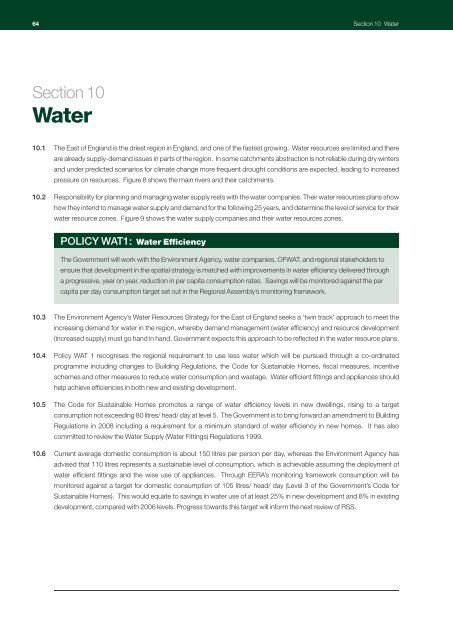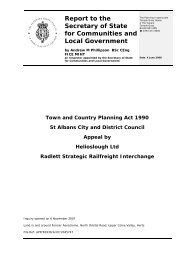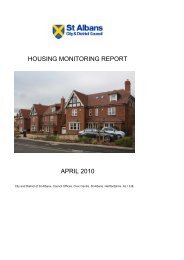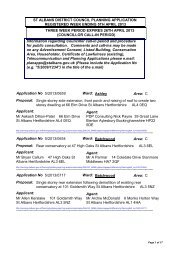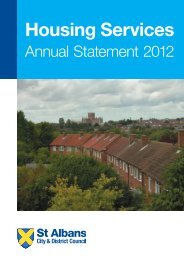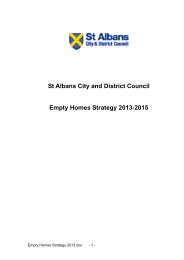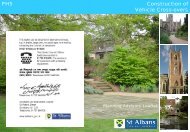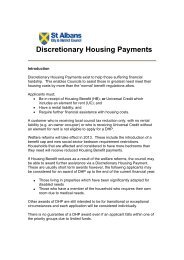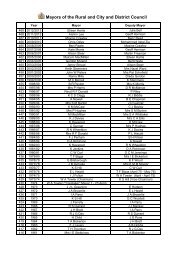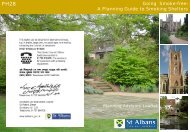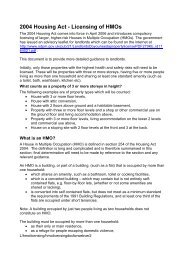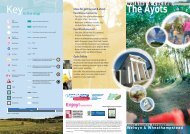RSS East Of England Plan - Broads Authority
RSS East Of England Plan - Broads Authority
RSS East Of England Plan - Broads Authority
Create successful ePaper yourself
Turn your PDF publications into a flip-book with our unique Google optimized e-Paper software.
64<br />
Section 10 Water<br />
Section 10<br />
Water<br />
10.1 The <strong>East</strong> of <strong>England</strong> is the driest region in <strong>England</strong>, and one of the fastest growing. Water resources are limited and there<br />
are already supply-demand issues in parts of the region. In some catchments abstraction is not reliable during dry winters<br />
and under predicted scenarios for climate change more frequent drought conditions are expected, leading to increased<br />
pressure on resources. Figure 8 shows the main rivers and their catchments.<br />
10.2 Responsibility for planning and managing water supply rests with the water companies. Their water resources plans show<br />
how they intend to manage water supply and demand for the following 25 years, and determine the level of service for their<br />
water resource zones. Figure 9 shows the water supply companies and their water resources zones.<br />
POLICY WAT1: Water Efficiency<br />
The Government will work with the Environment Agency, water companies, OFWAT, and regional stakeholders to<br />
ensure that development in the spatial strategy is matched with improvements in water efficiency delivered through<br />
a progressive, year on year, reduction in per capita consumption rates. Savings will be monitored against the per<br />
capita per day consumption target set out in the Regional Assembly’s monitoring framework.<br />
10.3 The Environment Agency’s Water Resources Strategy for the <strong>East</strong> of <strong>England</strong> seeks a ‘twin track’ approach to meet the<br />
increasing demand for water in the region, whereby demand management (water efficiency) and resource development<br />
(increased supply) must go hand in hand. Government expects this approach to be reflected in the water resource plans.<br />
10.4 Policy WAT 1 recognises the regional requirement to use less water which will be pursued through a co-ordinated<br />
programme including changes to Building Regulations, the Code for Sustainable Homes, fiscal measures, incentive<br />
schemes and other measures to reduce water consumption and wastage. Water efficient fittings and appliances should<br />
help achieve efficiencies in both new and existing development.<br />
10.5 The Code for Sustainable Homes promotes a range of water efficiency levels in new dwellings, rising to a target<br />
consumption not exceeding 80 litres/ head/ day at level 5. The Government is to bring forward an amendment to Building<br />
Regulations in 2008 including a requirement for a minimum standard of water efficiency in new homes. It has also<br />
committed to review the Water Supply (Water Fittings) Regulations 1999.<br />
10.6 Current average domestic consumption is about 150 litres per person per day, whereas the Environment Agency has<br />
advised that 110 litres represents a sustainable level of consumption, which is achievable assuming the deployment of<br />
water efficient fittings and the wise use of appliances. Through EERA’s monitoring framework consumption will be<br />
monitored against a target for domestic consumption of 105 litres/ head/ day (Level 3 of the Government’s Code for<br />
Sustainable Homes). This would equate to savings in water use of at least 25% in new development and 8% in existing<br />
development, compared with 2006 levels. Progress towards this target will inform the next review of <strong>RSS</strong>.


